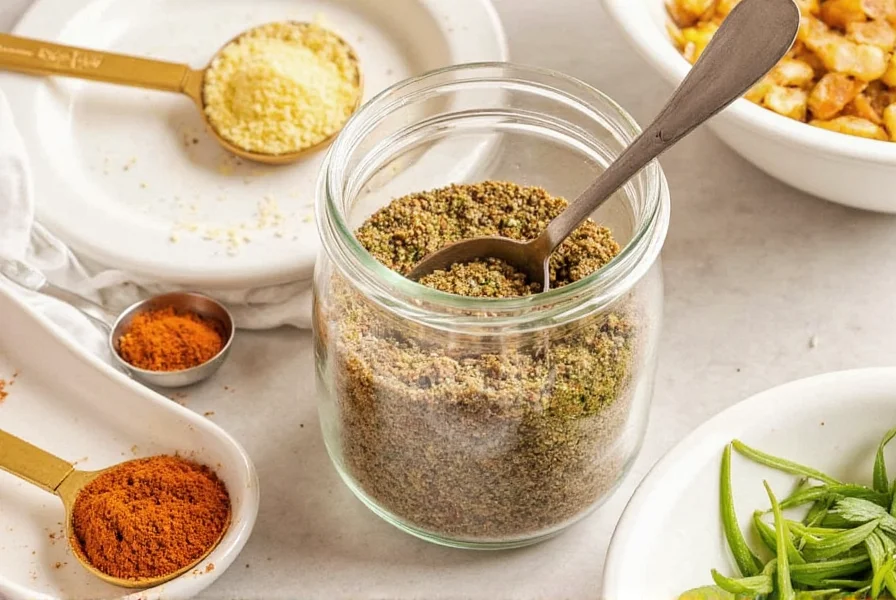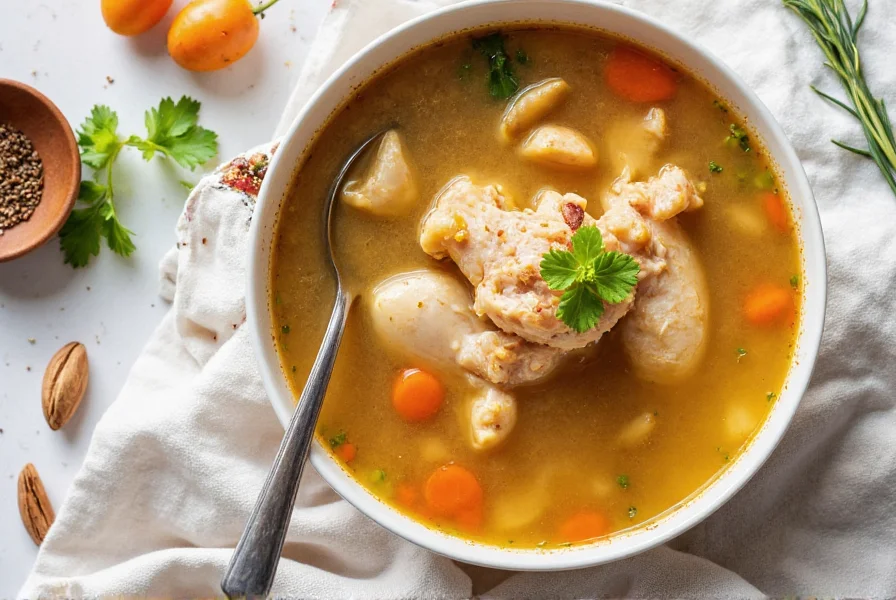Creating your own chicken soup seasoning unlocks superior flavor control while avoiding the preservatives and excessive sodium common in store-bought versions. Whether you're crafting a comforting pot of chicken noodle soup or seasoning roasted vegetables, understanding the components of this versatile blend transforms ordinary dishes into culinary highlights.
Essential Components of Chicken Soup Seasoning
The magic of chicken soup seasoning lies in its balanced combination of aromatic herbs, umami boosters, and subtle heat elements. Unlike commercial packets that often contain MSG and anti-caking agents, a homemade blend lets you customize flavors to your exact preference while maintaining complete ingredient transparency.
Professional chefs rely on these core components for authentic chicken soup flavor:
| Ingredient Category | Key Components | Flavor Contribution |
|---|---|---|
| Base Herbs | Dried parsley, thyme, marjoram | Grassy, floral notes that form the foundation |
| Aromatic Alliums | Onion powder, garlic powder | Savory depth and complexity |
| Umami Enhancers | Celery seed, dried mushrooms (optional) | Rich, meaty undertones without actual meat |
| Subtle Heat | Black pepper, white pepper (optional) | Background warmth without noticeable spiciness |
Why Homemade Beats Store-Bought Every Time
Commercial chicken soup seasoning packets typically contain 400-800mg of sodium per serving along with maltodextrin, autolyzed yeast extract, and artificial flavors. When you make your own homemade chicken soup seasoning from scratch, you gain significant advantages:
- Sodium control—adjust to dietary needs or preferences
- No hidden additives—avoid preservatives and artificial ingredients
- Superior freshness—dried herbs lose potency after 6 months
- Cost efficiency—bulk spices cost pennies per serving
- Customization—tailor flavors to personal taste preferences

Perfect Basic Chicken Soup Seasoning Recipe
This professional chef-approved blend creates restaurant-quality flavor in minutes. The 4:2:1 ratio (herbs to aromatics to seasonings) provides balanced flavor without overwhelming any single component.
Ingredients
- 4 tablespoons dried parsley
- 2 tablespoons dried thyme
- 2 tablespoons onion powder
- 2 tablespoons garlic powder
- 1 tablespoon celery seed
- 1 tablespoon dried marjoram
- 2 teaspoons black pepper
- 1½ teaspoons sea salt (adjust to preference)
Instructions
- Combine all ingredients in a small bowl
- Whisk thoroughly for 60 seconds to ensure even distribution
- Transfer to an airtight container away from light and heat
- Use within 6 months for peak flavor (though safe indefinitely)
Usage tip: For every 4 cups of broth, use 1½ tablespoons of this homemade chicken soup mix from scratch. When making actual chicken soup, add during the last 15 minutes of cooking to preserve volatile aromatic compounds.
Specialized Variations for Dietary Needs
Adapting your chicken soup seasoning recipe for specific dietary requirements takes minimal effort while maintaining exceptional flavor.
Low-Sodium Version
Replace salt with 1 tablespoon nutritional yeast and add ½ teaspoon citric acid powder. The nutritional yeast provides savory depth while citric acid enhances perception of saltiness without sodium.
Gluten-Free Assurance
While traditional blends are naturally gluten-free, cross-contamination can occur during processing. For absolute certainty, purchase spices labeled gluten-free or source from dedicated gluten-free suppliers when creating your gluten free chicken broth seasoning.
International Flavor Twists
- Mediterranean: Add 1 teaspoon dried oregano and ½ teaspoon lemon zest
- French Herb: Increase tarragon to 1 tablespoon and add ½ teaspoon dried chervil
- Asian-Inspired: Add 1 teaspoon ginger powder and ½ teaspoon toasted sesame oil (add oil to finished soup)

Mastering Usage Techniques
Understanding how to use chicken soup seasoning properly separates adequate soups from extraordinary ones. Many home cooks make these critical mistakes:
- Adding seasoning too early in cooking process (causes flavor degradation)
- Using excessive amounts to compensate for bland base broth
- Not blooming spices in fat before adding liquid
For professional results when using your homemade chicken bouillon seasoning, follow these techniques:
- Bloom in fat: Sauté 1 tablespoon seasoning in 2 tablespoons olive oil for 60 seconds before adding broth
- Layer flavors: Add half initially, then remaining half during last 15 minutes of cooking
- Acid balance: Finish with 1 teaspoon lemon juice or apple cider vinegar to brighten flavors
Troubleshooting Common Issues
Even with perfect chicken soup mix from scratch, problems can occur. Here's how to fix them:
- Too salty: Add raw potato chunks (remove after 15 minutes) or dilute with unsalted broth
- Flat flavor: Boost with ½ teaspoon fish sauce or 1 tablespoon tomato paste
- Bitter notes: Balance with ¼ teaspoon sugar or 1 teaspoon honey
- Weak aroma: Stir in 1 tablespoon fresh herbs just before serving
Remember that proper storage in dark glass containers away from heat sources preserves volatile flavor compounds in your best herbs for chicken soup seasoning blend for up to six months.
Smart Substitutions When Ingredients Are Missing
Ran out of a key component for your substitute for chicken soup seasoning packet? These professional alternatives maintain flavor integrity:
- No celery seed: Use 1 teaspoon fennel seeds (lightly crushed) or 2 tablespoons finely minced celery leaves
- No dried thyme: Substitute equal parts dried oregano or 3 times the amount of fresh thyme
- No onion powder: Use 1½ tablespoons onion flakes soaked in 2 tablespoons warm water for 5 minutes
For emergency situations when you need an immediate chicken soup seasoning alternative, combine equal parts poultry seasoning and onion soup mix—but recognize this creates a noticeably different flavor profile.










 浙公网安备
33010002000092号
浙公网安备
33010002000092号 浙B2-20120091-4
浙B2-20120091-4